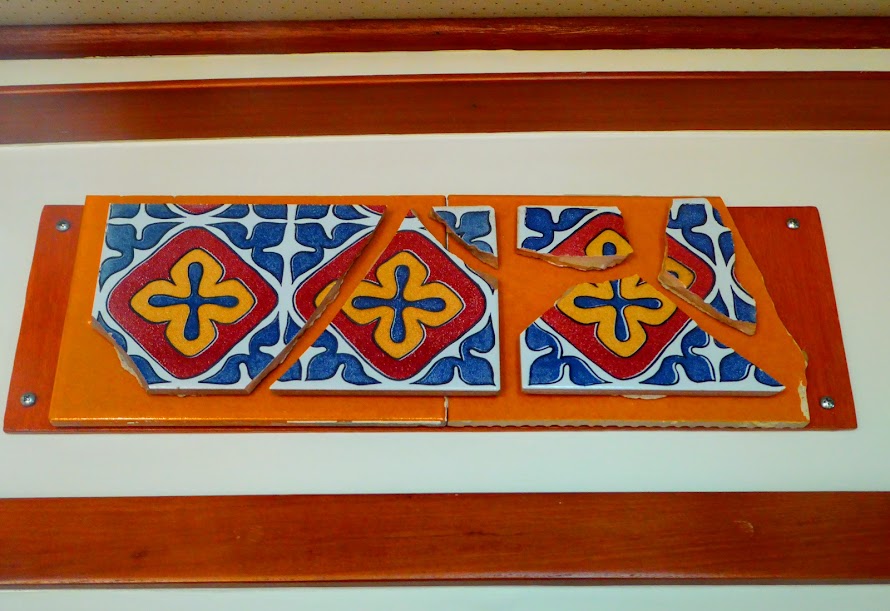For those of you who don’t know (I didn’t), Pablo Escobar was a Colombian drug lord who was one of the wealthiest, most powerful and violet criminals of all time. He built several holiday homes, one of which was located on a hilltop on Catalina Island, where it is rumored that he plotted his smuggling activities.
After a quick search, here is what I learned out about Pablo Escobar.
Early on, Escobar gained prominence when he played a high-profile role in the control of Colombia’s smuggled cigarette market (called the “Marlboro Wars.”) This experience proved to be valuable training for the future narcotics dealer.
Mainland Colombia’s geographical location proved to be its biggest asset. Located at the northern tip of South America, between the thriving coca cultivation in Peru and Bolivia, the country came to dominate the global cocaine trade with the United States, the biggest market for the drug.
Under Escobar’s leadership, large amounts of coca paste were purchased in Bolivia and Peru, processed, and brought to America. Escobar worked with a small group to form the Medellin Cartel, and by the mid-1980s, he controlled more than 80 percent of the cocaine smuggled into the United States! More than 15 tons of cocaine were reportedly smuggled each day, netting the Cartel as much as $420 million a week!!
The cash was coming in so fast that Escobar purchased a Learjet for the sole purpose of flying his money. With an estimated worth of $30 billion, he was named one of the ten richest people on earth by Forbes Magazine.
In June of 1991, after a long reign of terror and violence, Escobar surrendered to the Colombian government. In return, the threat of extradition was lifted and he was allowed to build his own luxury prison (not a bad deal), which was named “La Catedral.” Guarded by men he handpicked from among his employees, the “prison” came complete with a casino, spa and nightclub (such suffering).
In June of 1992, however, Escobar escaped when authorities attempted to move him to a more standard holding facility. A manhunt for the drug lord was launched that would last 16 months. During that time, the monopoly of the Medellin Cartel he’d formed rapidly deteriorated.
After many near misses, the Colombian law enforcement finally caught up to Escobar in December of 1993, in a middle-class neighborhood in Medellin. A firefight ensued, and as Escobar tried to escape across a series of rooftops, he and his bodyguard were shot and killed.
His death accelerated the demise of Colombia’s central role in the cocaine trade. His passing was celebrated by the country’s government and other parts of the world, but many Colombians mourned his killing. More than 25,000 people turned out for Escobar’s burial.
After learning more about this intriguing drug lord, Scott and I decided to hike up and find the house. It was seized by the Colombian government, and is collapsing, but still seemed worth a look.
We trudged over rotten mangoes, past piles and piles of coconut husks, and then along the shoreline.



Eventually, we made our way through the overgrown path, and found some switchback steps that lead up to the house. They were sloped and covered with leaves, and I wished that the ropes used to connect the posts along the way were still intact.

After a cardio workout up the steps, we arrived at what’s left of the house.

It seemed to be a three bedroom house, with two downstairs and one located above the now fallen staircase. The views must have been amazing, when the trees and brush were kept at bay.


Many of the tiles on the floors and walls were still intact and in great shape. I tried to convince Scott to try and pry some off with his machete, but had no luck.

Instead, we gathered pieces from the floor, that were in decent shape, and plan to mount them on a board to hang on the wall. I can now check “looting” off of my life list!
Then we ventured out back, where the hot tub and pool were located. Again, the views from here would have been great in it’s heyday.

We started down a set of steps that lead away from the pool, and came across the remains of what was either a guest house, or servant’s quarters. Again, the bathroom was still standing, with the tile inside in great shape.

We decided to make our way back using this path, but changed our minds quickly, when we ran into, literally, biting ants. Brushing ourselves off, as we high-tailed it back up to the house, we started back down our original path.
As we came past a clearing, Scott noticed some palm trees that still had green coconuts hanging from them. Wanting some to serve our friends coco locos in, he began to try and climb up to get to them.

When that didn’t work, I directed him to a shorter tree, with one green coconut that he could easily pick by hand.

Not satisfied with just one, he went back to the first tree, and again tried to climb it, this time using one of the fronds as a rope. Unfortunately, this also proved unsuccessful.

Scott is nothing if not determined, so next he tried using one of the dead fronds to knock the coconuts loose. Again, no luck.

Still not defeated, he found some rocks, and heaved them at the tree top…nope.

Finally, he admitted defeat, and we continued on, with one coconut to take home.

We arrived back at the boat, covered head to toe in sweat. Scott likes to say that we came away from Pablo Escobar’s house with a “kilo”…..of tiles!

Here are many more photos of our hike up to Pablo’s house.
“Shells Sink, Dreams Float. Life’s Good On Our Boat!”

